Jitendra Kothari, Bollywood News Service in Mumbai
Serpentine queues outside theatres or servers inundated by online booking attempts?
Tickets in black or unofficial downloads?
A multi-week run or a spectacular television debut?
Unfortunately, there is no level playing field when it comes to comparing films released decades apart.
Especially when you consider the fact that cinemas, earlier, had a single screen and would host four shows a day. Today, multiplexes have double-digit shows every day.
The country's population has increased exponentially with each passing year, the ticket rates have skyrocketed and the collation of a film's collection has become more scientific.
Yet, despite these vast differences, there have been movies that have re-defined the word 'blockbuster' -- movies that have compelled audiences to return to the theatre over and over again.
As Indian cinema celebrates its 100th anniversary, we take a look at some of Hindi cinema's biggest hits.
Dabangg (2010)
The monster hit that started Salman Khan's current winning streak, Dabangg was a sleeper superhit.
Helmed by a new director Abhinav Kashyap and with an untested heroine in Sonakshi Sinha, this one was not expected to make many waves -- but it unleashed a tsunami.
Dabangg grossed Rs 140 crores at the box office establishing that one did not need big-name directors or bank-breaking budgets to gladden the public's hearts.
The film rode on the new Salman it presented, long on swagger and style. A successful item number in Munni badnam hui, a pretty heroine and competent character actors were just so much garnishing. The audience had been yearning for an old world leading man -- part-time vigilante, part-time messiah, full-time hero -- and that's what they got.
Dabangg established the primacy of the old order when right is always might; and revivified a genre. At the box office, as in the seasons of life, expect a full circle.
3 Idiots (2009)
Image: Sharman Joshi, Aamir Khan and R Madhavan in 3 IdiotsThis can, of course, be partly attributed to the overall surge in film revenue, the mushrooming of multiplexes and the high growth rate economy.
But what is relevant is that three years later, in an atmosphere of ever-escalating numbers, 3 Idiots' record remains unbroken.
Audiences warmed to the film's irreverent tone and comic interludes but they responded also to the undertow of seriousness.
Director Rajkumar Hirani's new-agey message to the nation's youth pressurised by rising expectations and societal strains was easy to get -- follow your heart.
Gadar: Ek Prem Katha (2001)
Image: A scene from Gadar: Ek Prem KathaSet in the 1940s, Sharma's Gadar starkly presented the human tragedies played out during the Partition of the country, and the plight of a hapless couple (Sunny Deol and Ameesha Patel) caught between forces not of their own making when their family is torn apart.
The superhit film tapped into the patriotic fervour aroused in the wake of the Kargil war in 1999.
Since the release of Gadar, the growth in the film business has been remarkable -- multiplexes were not so omnipresent at the turn of he millennium yet superhits that released half a decade later have found it difficult to match Gadar's seat filling abilities.
Dilwale Dulhaniya Le Jayenge (1995)
Image: A scene from Dilwale Dulhaniya Le JayengeEasily bagging the distinction of being the longest running film in Hindi film history, Dilwale Dulhaniya Le Jayenge has been showcased at Mumbai's Maratha Mandir theatre for over 17 years now.
A revivalist saga like Hum Aapke Hain Koun...!, DDLJ's romance is premised on the assent of the lovers' parents, just like Yash Chopra's Kabhie Kabhie (1976).
But 24-year-old Aditya Chopra's deft take differed from his father's -- instead of succumbing to family pressures or rebelling against them, DDLJ's lovers (played by Shah Rukh Khan and Kajol) try to woo the recalcitrant elders.
Armed with dialogue that's both zingy and thought-provoking and a pace that just didn't let up, Adi fashioned a true blue crowd pleaser.
Dilwale Dulhaniya Le Jayenge grossed a staggering $5 million worldwide, opening the floodgates for Hindi films abroad.
Hum Aapke Hain Koun...! (1994)
Image: A scene from Hum Aapke Hain Koun...!Yet, backed by Rajshri Productions' astonishing pluck, this Sooraj Barjatya film flew in the face of every business verity and emerged triumphant.
The film was initially released in only selective theatres and ticket prices were raised to the infamous Rs 100 benchmark. Yet, exhibitors and the public just couldn't have enough.
HAHK's super success conclusively proved that you cannot second guess the audience or pre-order a blockbuster. With HAHK, Salman made an affirmative comeback and Madhuri was anointed the queen of the 1990s.
Besides being a box office behemoth that raised the earning potential of Bollywood films by multiples, this homespun charmer was also a cultural landmark.
Though the film was initially dismissed as a wedding video, it's success indicated that post-liberalisation, Indian audiences still clung to the comfort of the familiar.
Sholay (1975)
Image: A scene from SholayAt the time of its release Sholay was an event film -- the first to have a 70 mm screen, a Pharoanic budget and a clutch of major stars (Dharmendra, Amitabh Bachchan, Sanjeev Kumar, Hema Malini, Jaya Bhaduri).
Director Ramesh Sippy appealed to cine-goers with his masterful handling of Salim-Javed's brilliant script about two commen hired to guard a village against ferocious dacoit Gabbar Singh.
Despite a wobbly beginning at the ticket windows, Sholay picked up steam and ran for five years in Mumbai's Minerva theatre.
The film's new stereophonic sound echoed the offscreen boom of box office records being shattered to smithereens. The film raced to collections of Rs 10 cores within months of its release, outclassing all contemporaneous films and remaining unchallenged for years thereafter.
Strangely, just like Gyan Mukherji (Kismet), Mehboob Khan (Mother India) and K Asif (Mughal-e-Azam), Ramesh Sippy too never made another superhit film again.
Mughal-E-Azam (1960)
Image: A scene from Mughal-E-AzamEven five decades years later, Mughal-e-Azam remains synonymous with epic extravaganza courtesy its elaborate battle scenes, the lavish Sheesh Mahal set et al.
K Asif's magnum opus continues its hold on our collective consciousness most of all due to its doomed but defiant love story between Prince Salim and the dancer Anarkali (played by Dilip Kumar and Madhubala) that eternally echoes in the heartbeats of love-struck youth.
Crowds clapped thunderously when Dilip Kumar defied the king with rebellious dialogue such as 'Mera dil bhi aapka Hindustan nahin hai, jo aap uspar hukumat kare' or when Madhubala swirled to 'Pyar kiya toh darna kya'.
For weeks after its release, it was impossible to get tickets unless booked well in advance.
For Dilip Kumar, Mughal-e-Azam was the high water mark of an extraordinary career.
Madhubala's ill-health necessitated an early retirement after Mughal-e-Azam -- the aura of romance and tragedy surrounding her in this classic as well as in real life has contributed towards building her legend as Bollywood's most beautiful heroine ever.
Mother India (1957)
Image: A scene from Mother IndiaMother India's poster noted: "The grain of rice on your table does not tell the grim tale of the toil that grew it'.
Director Mehboob Khan's narrative genius unfolds the story of a single mother's epic struggle to eke out a subsistence for her children on her farm.
Heroically played by Nargis, she fends off horrific hunger and a lecherous landlord while adhering to her code of ethics. But when her own beloved son rebelliously seeks to violate her code, she steels her heart and shoots him down.
Mother India's sweeping success institutionalised Bollywood's preoccupation with the mother figure and the good son-bad son conflict.
The film transformed newcomers Raaj Kumar (as Nargis' husband), Rajendra Kumar (as the obedient son) and Sunil Dutt (as the rebellious son) into stars; and it immortalised Nargis.
Awaara (1951)
Image: A scene from AwaaraAwaara's cross-culture popularity hinged on the eternal 'nature vs nurture' debate.
Raj Kapoor, also the film's director, played a judge's son who is kidnapped and raised by a vengeful dacoit. So what will lay claim on his soul -- the blackguard's villainy or leading lady Nargis' love?
Audiences thrilled to the hitherto-unseen passion and searing intensity of the Raj-Nargis love scenes.
Kapoor and Nargis were feted and felicitated as part of a delegation to Russia soon thereafter. The film had conclusively opened the doors of Hindi cinema to an eager foreign audience.
Kismet (1943)
Image: A scene from KismetWith its fractured-family-lost-and-found-by-kismet theme, (Ashok, it is climactically discovered, belongs to a moneyed family), the film also set into motion another perennially popular Bollywood genre trope.
Kismet played for 192 weeks at Kolkata's Roxy cinema, its success marking the zenith of the legendary Bombay Talkies studio.
The film's appeal lay in the fact that it throbbed in rhythm with the pulse of its times. In pre-Independence India, lyricist Pradeep, composer Anil Biswas and director Gyan Mukherji thumbed their noses at the British rulers with the audaciously bold song 'Aaj Himalaya ki choti se phir hamne lalkara hai -- door hato aye duniyawalon Hindustan hamara hai'.
Of course, the pretext was that it alluded to Britain's World War II enemies -- Germany and Japan, which was knocking on India's door -- but the pro-freedom subtext was clear to the audience, who cheered it to thumping success.

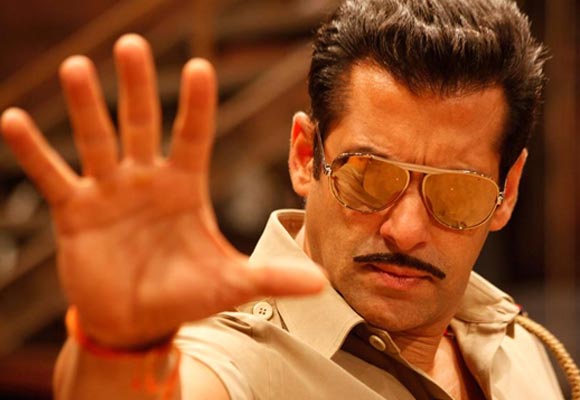
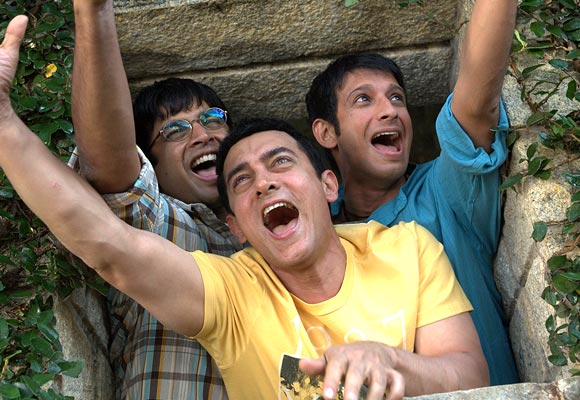

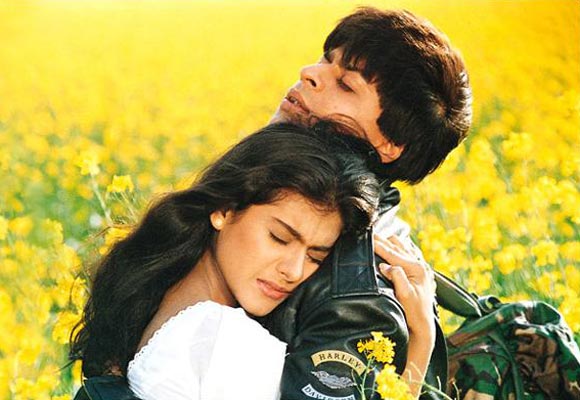
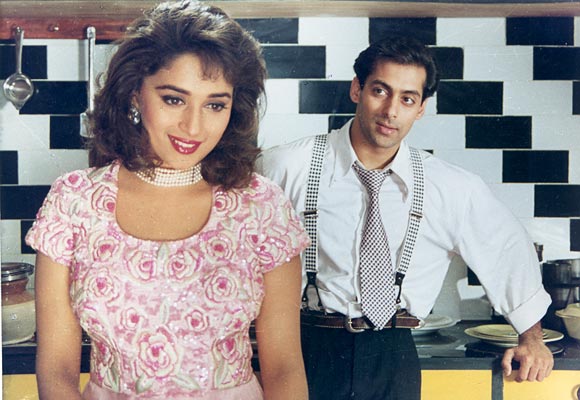

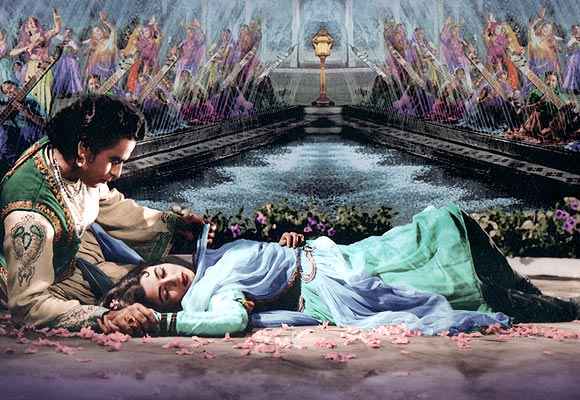
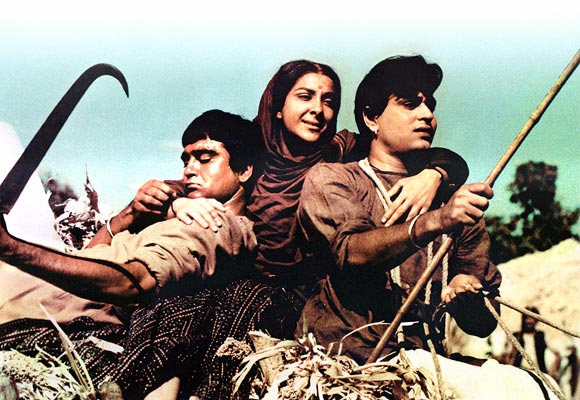
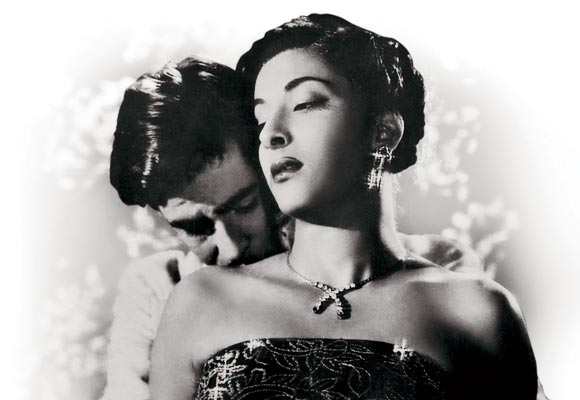
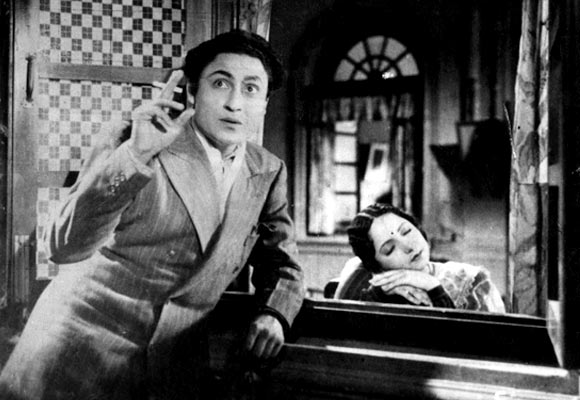
Comment
article